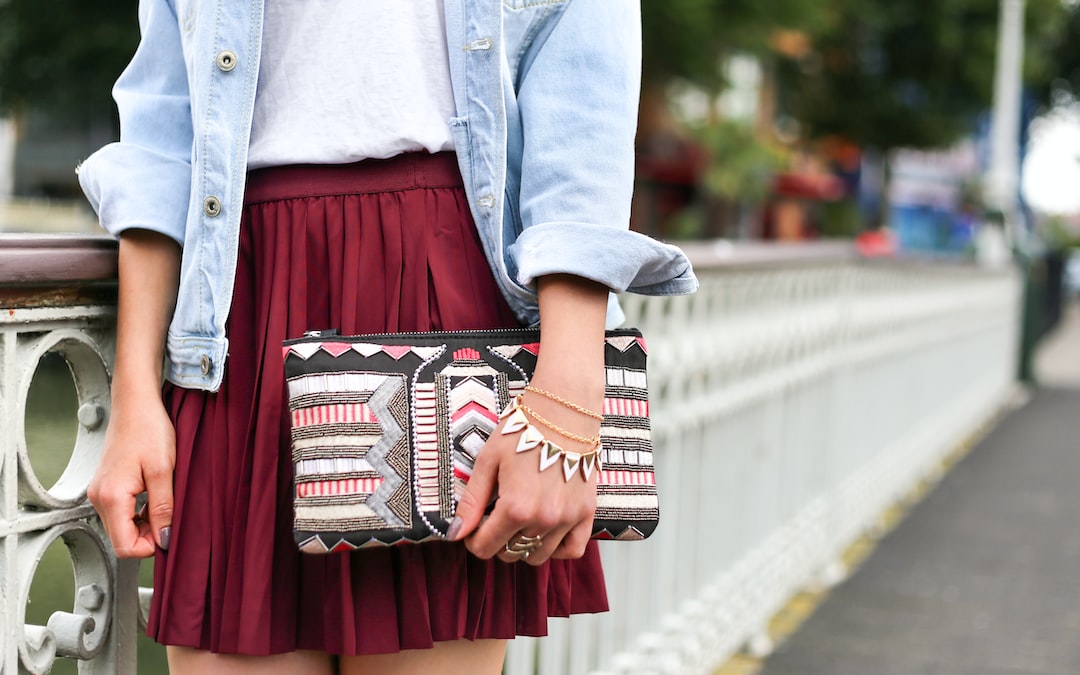The significance of color in fashion: Understanding the psychology behind it
Color plays a fundamental role in our daily lives and has a profound impact on our emotions, behaviors, and perceptions. Its significance extends beyond mere aesthetics and ventures into the realm of psychological implications. In the world of fashion, this understanding becomes particularly relevant, as the choice of colors can convey various messages and evoke specific reactions from individuals. By unraveling the psychology behind color, we gain a deeper appreciation for how fashion can influence our thoughts, emotions, and overall well-being.
The power of color lies in its ability to evoke strong emotional responses. Different hues have been found to stimulate different feelings, associations, and moods. For instance, warm colors like red and orange elicit feelings of energy, passion, and excitement, while cool colors such as blue and green evoke a sense of calmness, tranquility, and relaxation. These color associations can be used strategically in fashion to elicit specific emotional responses from the audience. Whether through clothing, accessories, or makeup, fashion enthusiasts understand the importance of selecting the right color to express their desired mood or evoke a particular response in others.
Moreover, colors can also convey cultural and societal meanings. In different parts of the world, colors are often imbued with symbolic significance. For instance, in Western cultures, white is associated with purity and innocence, while in Asian cultures, it symbolizes mourning and grief. Fashion designers need to be cognizant of these cultural nuances when selecting colors for their creations. By understanding the cultural and social implications of color, fashion designers can create designs that appeal to specific target audiences and resonate with their deep-rooted beliefs and values.
The psychology behind color extends beyond emotions and cultural symbolism. Colors can also impact our perception of certain qualities and attributes in both ourselves and others. Research has shown that colors can influence our perceptions of a person’s attractiveness, competence, and trustworthiness. For example, in one study, participants rated individuals wearing red as more attractive compared to those in other colors. Similarly, blue and black were associated with increased perceptions of competence and professionalism. These findings demonstrate the power of color in shaping our initial impressions and judgments of others, making it an important consideration when choosing outfits for interviews or important social occasions.
Furthermore, our personal color preferences are reflective of our personalities and individual preferences. The colors we are drawn to can reveal insights into our unique traits and characteristics. For instance, those who prefer bold and vibrant colors like red and yellow are often perceived as energetic, extroverted, and creative. On the other hand, individuals who gravitate towards softer shades like pastels and neutrals tend to be more introverted, calm, and reserved. Fashion allows us to express our personalities and shape how others perceive us by being intentional about the colors we incorporate into our outfits.
In addition to their psychological implications, colors also possess practical uses in fashion. They can be used to enhance or downplay certain physical attributes, create optical illusions, or simply add visual interest to an outfit. For example, dark colors are often used to create a slimming effect, while lighter shades can make certain features appear more prominent. Understanding the principles of color can empower individuals to style themselves in a way that accentuates their best features and flatters their unique body shapes.
However, it is important to note that the psychological effects of colors are not set in stone. Personal experiences, cultural factors, and individual contexts can all influence our responses to different colors. Additionally, individual preferences can also vary widely. What appeals to one person may elicit an entirely different reaction from someone else. It is this subjectivity and diversity of perceptions that makes fashion such a fascinating and dynamic form of self-expression.
In conclusion, the significance of color in fashion extends far beyond its aesthetic appeal. Understanding the psychology behind color allows us to harness its power to evoke specific emotions, convey cultural meanings, shape perceptions, and express our unique personalities. Whether consciously or subconsciously, the colors we choose to wear can influence how we feel and how others perceive us. By exploring the psychology of color, we can unlock new dimensions of fashion and use it as a tool for self-expression and communication.

